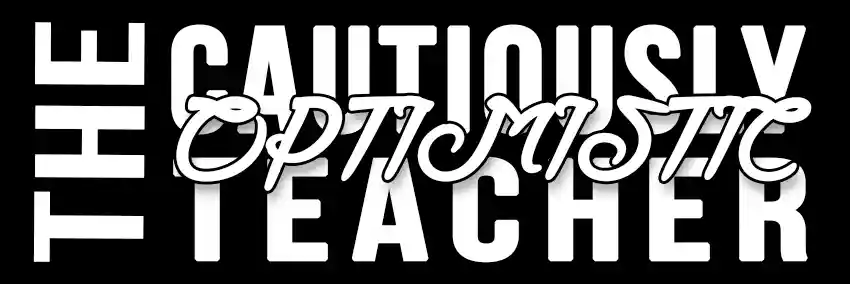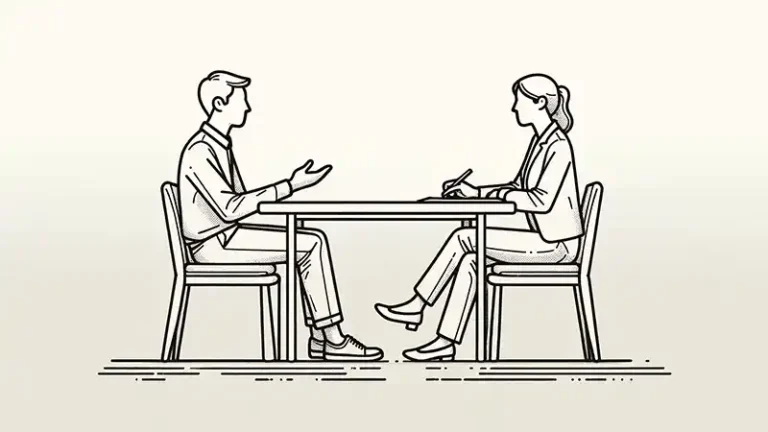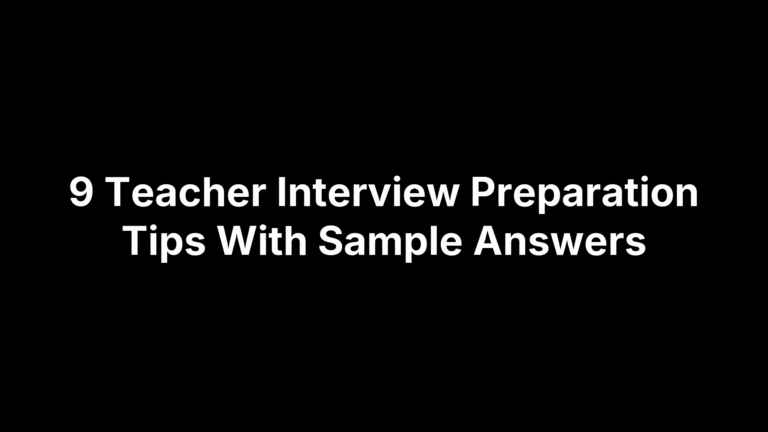Creating a Standout Teaching Portfolio: What to Include
A teaching portfolio is much more than a collection of documents. It’s a carefully curated showcase of your skills, experiences, and philosophies as an educator. Whether you’re applying for a new teaching position, aiming for a promotion, or simply reflecting on your professional growth, a well-constructed portfolio can be your best ally.
In the job application process, your teaching portfolio offers a vivid picture of what you bring to the table. It’s not just about your qualifications on paper; it’s about demonstrating how you apply your skills in real classroom situations. Think of it as a bridge connecting your past experiences with your potential future in teaching.
For professional development, the portfolio serves as a reflective tool, helping you assess your strengths and identify areas for improvement. It’s a living document, evolving as you grow in your career. Every new experience, every piece of feedback, and every additional skill you acquire adds another layer to your portfolio, making it a comprehensive record of your journey as an educator.
Understanding the Portfolio’s Purpose
Let’s get into the nitty-gritty of what a teaching portfolio is all about. When you start putting together your portfolio, one of the first decisions you’ll make is whether to go digital or stick with a traditional physical format. Both have their perks, so let’s compare, shall we?
Digital vs. Physical Portfolios
Digital Portfolios: These are all the rage these days, and for good reason. They’re easily accessible, can be shared with a simple link, and allow for a lot of creative freedom. You can include videos of your teaching in action, links to your educational blogs, or digital copies of student feedback. Plus, updating a digital portfolio is usually just a few clicks away.
Physical Portfolios: There’s something about the tangibility of a physical portfolio that still holds appeal. It’s a concrete collection of your work, which can be impactful in an interview setting. Physical portfolios are great for showcasing printed lesson plans, letters of recommendation, and certificates. However, they can be bulky and less convenient to update and duplicate.
No matter which format you choose, the heart of your portfolio lies in how it reflects your teaching philosophy and methodology. This is where you get to shine!
Reflecting Your Teaching Philosophy and Methodology

Your teaching portfolio should be a mirror of your educational beliefs and teaching style. It’s not just about showing what you’ve done; it’s about illustrating your approach to education and how you engage with students.
Teaching Philosophy: This is your educational manifesto. It should articulate your beliefs about teaching and learning, your approach to classroom management, and how you support and motivate students. Your philosophy should permeate every part of your portfolio, from the lessons you choose to showcase to the methods of assessment you include.
Methodology: Here’s where you show the ‘how’ behind your ‘why.’ Your portfolio should include examples of how your teaching philosophy translates into actual classroom practice. This could be through detailed lesson plans, examples of student work, and descriptions of innovative teaching strategies you’ve employed.
Essential Components of a Teaching Portfolio
Alright, let’s dive into the meat of your portfolio – the essential components. These are the parts that will really make your portfolio shine and stand out from the crowd.
1. Teaching Philosophy Statement
This is the heart of your portfolio. Your teaching philosophy statement is a personal narrative that explains your beliefs about teaching and learning. It’s where you get to express why you do what you do. Here are some tips to write a reflective and impactful statement:
Be Authentic: Write in your own voice and share personal experiences or anecdotes that have shaped your teaching beliefs.
Focus on Students: Discuss how your philosophy benefits students. How do you engage them? How do you cater to diverse learning styles?
Connect Theory and Practice: Link your beliefs to actual teaching practices. For instance, if you believe in collaborative learning, describe how you implement group work in your classes.
Keep it Concise: Aim for a statement that is clear, well-organized, and to the point. Usually, one to two pages should suffice.
2. Resume/Curriculum Vitae
Your resume or CV is where you outline your professional journey. Here’s how to tailor it for teaching positions:
Highlight Relevant Experience: Focus on teaching experiences, including student teaching, tutoring, or any education-related roles.
Include Quantifiable Achievements: Where possible, use numbers or statistics to demonstrate your impact. For example, “Improved student reading levels by 20% over one academic year.”
Emphasize Skills: Include skills pertinent to teaching, like curriculum development, classroom management, or educational technology.
Keep it Updated: Regularly add new experiences, certifications, and skills as your career progresses.
3. Certifications and Qualifications
In this section, shine a light on your formal qualifications and any additional certifications you’ve earned:
Educational Background: List your degrees, along with any honors or distinctions.
Specialized Training: If you’ve completed specialized training programs or workshops, especially those that add unique skills to your teaching repertoire, include them here.
Certificates and Licenses: Include any teaching licenses or certificates, especially if they’re specific to the areas or grades you teach.
Evidence of Teaching Effectiveness
Now, let’s talk about the proof in the pudding – demonstrating your effectiveness as a teacher. This part of your portfolio is where you get to show off the results of your hard work and innovative approaches. Let’s break it down:
1. Lesson Plans and Materials
Your lesson plans are the blueprint of your teaching. They reflect your creativity, organization, and ability to design engaging learning experiences. Here’s how to showcase them:
Variety: Include a range of lesson plans that demonstrate your ability to teach different subjects, grades, or skill levels.
Innovation: Highlight lesson plans where you’ve incorporated unique teaching methods, technology, or interdisciplinary approaches.
Outcomes: Whenever possible, show the results of these lessons. Did students engage more? Were there noticeable improvements in understanding or skill development?
2. Classroom Management Strategies
A well-managed classroom sets the stage for effective learning. This section should illustrate how you create and maintain a positive learning environment:
Philosophy: Briefly explain your approach to classroom management. What are your key beliefs and strategies?
Examples: Provide specific examples. This could include how you handle disruptions, encourage participation, or foster a respectful and inclusive classroom culture.
Evidence of Success: Include any feedback from students, parents, or colleagues that speaks to your abilities in managing a classroom effectively.
3. Student Assessments and Feedback
Assessment is a crucial part of teaching, as it provides insights into student learning and guides your instructional decisions. In this section, showcase how you assess and respond to student needs:
Assessment Types: Include a variety of assessments you use, such as quizzes, projects, or formative assessments.
Student Work Samples: Add samples of student work, especially those that demonstrate significant improvement or high achievement.
Your Feedback: Show examples of the feedback you provide to students. Highlight how your feedback is constructive, personalized, and aimed at encouraging student growth.
Reflections: Include your reflections on these assessments. How did they inform your teaching practice? What adjustments did you make based on student performance?
Professional Development

As educators, we’re always learning and growing, right? This section of your portfolio is all about showcasing that journey. Let’s delve into how you can effectively highlight your commitment to continuous improvement and professional excellence.
1. Continuing Education
This part is all about the extra miles you’ve gone in your educational journey. Here’s how to showcase it:
Detailed List: Create a comprehensive list of all the courses, workshops, seminars, and conferences you’ve attended. Be sure to include the dates and the names of the institutions or organizations that conducted them.
Relevance: Highlight how these courses have contributed to your teaching practice. For example, a workshop on digital learning tools shows your commitment to incorporating technology in the classroom.
Certificates and Credits: If you received any certificates or educational credits, make sure to mention them. These documents serve as tangible proof of your commitment to professional development.
Reflections: Add a brief reflection on what you learned from each course or workshop and how it has impacted your teaching. This personal touch shows that you’re not just attending these sessions, but actively integrating the knowledge into your practice.
2. Teaching Awards and Honors
Awards and honors are like gold stars on your portfolio; they highlight your excellence and commitment in the field of education. Here’s how to present them:
List of Awards: Include any teaching awards, commendations, or recognitions you’ve received. Don’t be shy; this is the time to shine!
Descriptions: Provide a brief description of each award or honor. What was it for? Who awarded it? This context helps others understand the significance of your achievements.
Evidence: If possible, include physical or digital copies of the awards or letters of recognition. These artifacts add credibility and a wow factor to your portfolio.
Impact: Reflect on how receiving these awards has influenced your teaching career. Did it motivate you to take on new challenges, or did it affirm your teaching methods?
Reflective and Personal Growth
This is where your portfolio gets really personal and introspective. The Reflective and Personal Growth section is your opportunity to show how you evaluate your own teaching and how you’ve grown over time. It’s about being open, honest, and, most importantly, reflective.
1. Self-Evaluations and Reflections
Self-evaluation is a powerful tool for professional growth. Here’s how to incorporate it into your portfolio:
Personal Reflections: Write about your teaching experiences, the challenges you’ve faced, and how you’ve overcome them. Discuss what these experiences taught you and how they’ve shaped your teaching philosophy.
Growth Over Time: If you’ve been teaching for a while, consider including reflections from different points in your career. This shows how your teaching style, approach, and philosophy have evolved.
Goals and Aspirations: Share your future goals. What aspects of teaching do you want to improve? What new methods or technologies are you eager to try? This shows that you’re forward-thinking and committed to continuous improvement.
2. Feedback from Peers and Supervisors
Feedback from colleagues and supervisors can provide an external perspective on your teaching. Here’s what to include:
Letters of Recommendation: These are gold! Include any letters of recommendation you’ve received. They provide a third-party validation of your skills and achievements.
Evaluations: If you have formal evaluations from supervisors, consider including summaries or highlights that showcase your strengths and areas of excellence.
Peer Reviews: Feedback from fellow teachers can be incredibly insightful. If you’ve participated in peer review programs, include some of the feedback you’ve received.
Commendations: Any special notes of thanks, awards from the school or district, or other commendations can be included here. They reinforce the positive impact you’ve had in your educational community.
Reflections on Feedback: Don’t just list the feedback; reflect on it. Discuss how it has influenced your teaching and what changes or improvements you’ve made as a result.
Presentation and Organization

Having gathered all these wonderful components for your teaching portfolio, it’s crucial to present them in a way that’s both organized and impactful. A well-structured portfolio makes it easier for others to navigate and ensures that your strengths and achievements are highlighted effectively.
1. Tips on Organizing the Portfolio
Logical Structure: Organize your portfolio in a way that makes sense. A common approach is chronological, but you could also organize it thematically, such as by skills or achievements.
Table of Contents: Start with a clear table of contents. This provides an overview and makes it easy for viewers to find specific sections.
Consistency: Keep formatting consistent throughout the portfolio. Use the same font style, size, and headings. This enhances readability and looks professional.
Brevity and Relevance: While it’s tempting to include everything, focus on brevity and relevance. Choose the pieces that best represent your skills and experiences.
2. Suggestions for Digital Portfolios
If you’re going digital, here are some ideas to make your portfolio stand out:
Choose the Right Platform: There are many platforms for digital portfolios, like WordPress, Google Sites, or specialized portfolio sites. Pick one that is user-friendly and allows you to customize the design.
Interactive Elements: Take advantage of the digital format. Include links to your blog posts, videos of your teaching, or slideshows of student work.
Navigation: Ensure your digital portfolio is easy to navigate with clear menus and clickable sections.
Mobile-Friendly: Make sure your portfolio looks good on both computers and mobile devices.
Regular Updates: One of the perks of a digital portfolio is that it’s easy to update. Make sure to regularly add new content and achievements.
Backup: Always keep a backup of your digital portfolio. You can use cloud storage or keep a downloadable version.
Conclusion
Alright, we’ve journeyed through the ins and outs of creating a standout teaching portfolio, and I hope you’re feeling inspired and ready to tackle yours! Let’s quickly recap the key takeaways to keep in mind as you craft this crucial tool in your professional arsenal.
Personalize Your Teaching Philosophy: Your portfolio starts with your teaching philosophy. Make it authentic and reflective of your unique approach to education.
Showcase Your Skills and Experiences: Through a well-organized resume, detailed lesson plans, and evidence of classroom effectiveness, your portfolio should highlight your strengths and achievements as an educator.
Evidence of Growth and Learning: Include your professional development activities, awards, and recognitions to show your commitment to continual learning and excellence in teaching.
Reflect and Receive Feedback: Incorporate self-evaluations and external feedback to demonstrate your willingness to grow and adapt as a teacher.
Organize for Impact: Whether digital or physical, ensure your portfolio is well-organized, easy to navigate, and visually appealing. This makes a lasting impression on whoever views it.
Update Regularly: Your teaching portfolio is a living document. As your career progresses, keep adding new experiences, skills, and reflections. This not only keeps your portfolio current but also helps you track your professional journey.
Creating and maintaining a teaching portfolio might seem like a daunting task, but it’s a rewarding one. It not only serves as a powerful tool for job applications and professional development but also becomes a personal record of your growth and achievements in the field of education.







